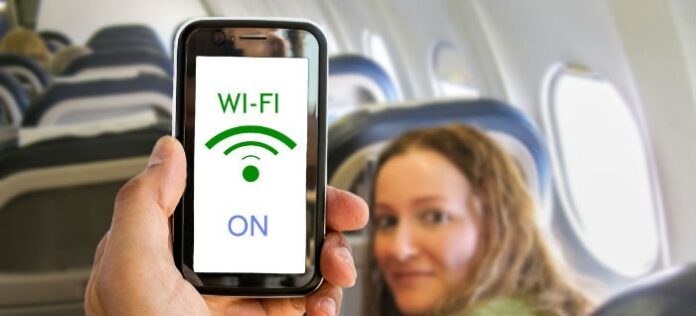Network would combine ground-based and satellite-based connectivity
WASHINGTON – Germany’s flagship airline Lufthansa has announced a deal with Deutsche Telekom, the parent company of carrier T-Mobile US, and the satellite firm Inmarsat, to provide passengers on its short- and medium-haul flights with broadband access.
The company told the press that the service will have “the same speed and quality” that customers are used to at home. The airline is still deciding on what the service will cost and has indicated that price may be linked to the class of ticket the customer buys.
If the service gets off the ground, Lufthansa will be the first European airline to offer this high-speed Internet. Wi-Fi is currently available for purchase on many flights, but the service is, in the words of BBC Travel show reporter Simon Calder, “not very good.”
Customers are frequently faced with slow speeds, delayed screen loading and crashes; accessing in-flight service is also very costly compared to what you can get from a Starbucks for the cost of a cup of coffee.
Deutsche Telekom, through its partnership with Inmarsat, is pledging to use a combination of satellite technology and a ground-based network to “deliver the fastest, best and most consistent in-flight broadband experience that meets the needs of airlines in this region.”
Lufthansa is hoping this new network will be a boost to business. The BBC has reported that a survey conducted by the airline showed two-thirds of respondents said access to high-speed Internet and good connectivity would influence their choice of airline.
Lufthansa is not the only airline examining the prospect of high-speed broadband, as British Airways is reportedly examining something similar. British Airways currently only offers Wi-Fi for its London to New York shuttle, but spokeswoman Kathryn Williamson told The Daily Telegraph, “Starting with U.K. domestic routes [the company] intends to roll-out Europe’s first ground-based 4G broadband network giving customers the Internet access they expect on the ground while in the air.”
As airlines struggle for profitability, in-flight, fee-based services are increasingly a competitive battleground, and in-flight connectivity is just one aspect of that.
For instance, Virgin America recently partnered with ViaSat with the goal of providing enough in-flight capacity to support video-streaming applications like Netflix and HBO Go.
This month, 10 of Virgin’s new A320 aircraft will get hooked up with ViaSat-1, a high-capacity Ka-band satellite that can deliver 140 gigabits per second of capacity.
Similarly, Gogo, a major provider of in-flight Wi-Fi networking equipment, earlier this year received approval from the Federal Aviation Administration to commercially use upgraded Wi-Fi equipment, although widespread commercial rollouts are slated for 2016.
The new Gogo hardware, called 2Ku, uses two low-profile satellite antennas to deliver Wi-Fi speeds of more than 70 Mbps. The 2Ku antenna improves spectral efficiency to produce more usable bandwidth and Gogo calls it “the most TV-friendly solution in the market.”
Part of the FAA’s involvement stems from the need to place the antennas on the exterior of aircraft. The 2Ku is 4.5 inches tall, “which reduces drag on the aircraft compared to other satellite solutions,” according to the company.

